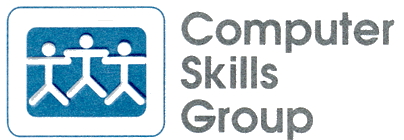

Most of us have little occasion to be involved with sophisticated networking devices, though that's changing with the new interest in having two or more home computers sharing a single high speed Internet connection. One of these devices, the "router", is showing up increasingly often in DSL and Broadband hookups. When you subscribed to your high-speed service, you were sent a device which is is a DSL Modem (or Broadband Modem, in the case of cable service). If the device has multiple places to plug computers into it, it's also a router. (If it only has one place to plug a computer in, it can still be a router but you need to ask if it is or not.) This bulletin will give you a little background about routers and give you one valuable tip about their use.
First of all, what is a router?
Now, my readers know I'm not about to give you a really technical definition here.
The layman's explaination is this.
Think of a router as a single-purpose computer whose main job it is to send (or "route") information to its proper destination.
Nearly all of today's routers have a built-in feature known as DHCP (if you care, that's "Dynamic Host Configuration Protocol"), and they perform a very important secondary function, that of hardware firewall.
More on that in a second.
I'm going to assume for this discussion, that your router has DHCP.
What does this mean to you?
Here's the trick.
Since the router is the only device connected directly to the Internet and since each computer in your home (or office) is connected to it, it's the perfect device to direct your data traffic.
Bingo! That's the main role of a router.
Data being sent to a specific computer, whether from the Internet or from another computer in your home or office, is "routed" to the correct computer by this intellegent device.
The router sees the data, determines whether it is addressed to one of the computers attached to the router, and sends it to that specific computer.
It doesn't matter how many computers you have hooked to the router.
It works the same for one machine or one hundred machines.
More importantly, routers with DHCP look at all incoming data (from the Internet). If it is not addressed to a valid computer attached to this router, the router will block it. This second job is very important as it provides your main level of defense from Internet invasion! When you hear people today talking about "firewalls", they are talking about something that blocks unwanted connections to your computer. If it's built into a hardware device such as a router, it's called a "hardware firewall".
Can my router do anything else?
Now let's expand our example to a home with three kids, all of whom have their own computers.
They all connect to the router and all share the high-speed Internet connection.
You would like to be able to share files between Mom and Dad, but not between the parents and the kids.
The features of a router are perfect for doing this.
It can direct connections to the proper computer and it can block connections to others.
Here, you want to create a LAN (local area connection) which includes Mom and Dad, but not the kids.
If you tell the router that the parent's two computers are to be included in a network, but the kids machines aren't, the router has no problem maintaining that separation.
So, now that you know what a router does, here are two tips for you.
The two tips -
First, when you have a choice, it is always preferable to have a DHCP router as the DSL or Broadband connection point.
The ISP may dictate your choice here, but if you have a choice of providers, or a choice within that provider, choose the DHCP router if it's available.
Second, whenever a network or a high-speed connection fails to work as expected, the first thing to try is to unplug the router for about 15 minutes. Now that you understand that a router has all this built-in intellegence, it shouldn't be a surprise to realize that sometimes, such as following a power surge or blip, this complex device can get "confused". Routers are designed to recover on their own and allowing the router to fully power down triggers this reconfiguration. Savy high-tech people know that this often fixes the problem. Don't be impatient with the 15 minutes, or when you power it back up either. You should expect it to take a couple of more minutes to reconfigure, once it plugged back in. It has to talk to your ISP to get a new IP (Internet Protocol) address and it has to assign new internal addresses to all the computers under it's control. Give it a couple of minutes. It's working hard to get it all right again!